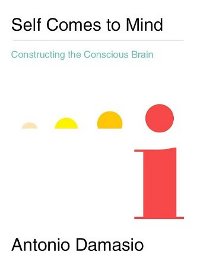Pantheon Books, 2010
Conclusion In “Self Comes to Mind”, Damasio provides a neuroscientific account of consciousness. Despite being occasionally somewhat opaque, the book is a worthwhile read for anyone interested in consciousness.

In his latest book, “Self Comes to Mind”, Antonio Damasio outlines his ideas about the neural basis of consciousness. This is not the first time (and probably not the last) that Damasio has dealt with this subject matter, but “Self Comes to Mind” is different from his previous books. First, the role of emotion is not quite as prominent. Second, “Self Comes to Mind” appears to be oriented towards people with some knowledge of neuroscience. The book is also perfectly suited for the interested layman, but those who are looking for light-weight popular science entertainment may be better off with, for example, recent books by Oliver Sacks or Victor Lamme.
 According to Damasio, consciousness is all about neural maps. In order for an object to be consciously perceived, it needs to be represented in brain areas that are crucial for consciousness. This statement is a tad trivial when it comes to sensory perception (vision, hearing, etc.), but Damasio emphasizes that this principle extends to emotions as well, with one difference: Emotions are the result of maps of the body itself, rather than maps of the outside world.
According to Damasio, consciousness is all about neural maps. In order for an object to be consciously perceived, it needs to be represented in brain areas that are crucial for consciousness. This statement is a tad trivial when it comes to sensory perception (vision, hearing, etc.), but Damasio emphasizes that this principle extends to emotions as well, with one difference: Emotions are the result of maps of the body itself, rather than maps of the outside world.
Damasio already expressed these ideas about neural map-making before, but in “Self Comes to Mind” he goes a step further and provides a detailed account of how he thinks consciousness emerges from the brain. He makes a distinction between three levels of “self”, which build on each other to construct the type of full blown consciousness that we humans are privileged to experience. As I understand it, the most basic form of self, the “protoself”, is a neural map of an organism's internal status: It reflects whether an organism is hungry, etc. The “core self” extends the protoself by incorporating interactions between an organism and its environment: An organism eats something and as a result its sense of hunger disappears. At the highest level, the “autobiographical self” adds information about an organism's past and its expectations about the future.
Although Damasio's description of the layered self is interesting and mostly quite convincing, I was also left confused at times. Does he mean that there really are three qualitatively different levels of self? Or does he make this strict distinction only for the sake of clarity, while he really envisions a continuum? As another example, in the final chapter, which deals with the contribution of culture to consciousness, he sympathizes with the notion that “something of great import may have happened to the human mind between the events narrated in the Iliad and those that make up the Odyssey.” Again, I was confused, because as far as I know the Iliad and the Odyssey span a few decades? This seems like too brief a time (an evolutionary blink of the eye, really) for any real changes to occur. Nitpicking aside, I'm sure Damasio doesn't mean to say that humans were substantially less conscious a few thousand years ago, but this section left an awful lot of room for interpretation.
In summary, there is a lot to like about “Self Comes to Mind”. Damasio is an excellent writer and his ideas are interesting. On a slightly less positive note, his writing is occasionally ambiguous, leaving the reader “not quite getting it”. Nevertheless, I recommend “Self Comes to Mind” to anyone who is interested in the neuroscience of consciousness, especially if you like to be challenged rather than entertained.
Get this book on amazon.com, amazon.co.uk
, bol.com or selexyz.nl.